




























































































































































ISSUE 16

FALL/Winter 2022-2023
EDITOR Sylvia E. King-Cohen
CONTRIBUTING WRITERS
James Bernstein

Brendan Carpenter Ellen Yan
EXECUTIVE EDITOR Michael Hinman
SPECIAL SECTIONS EDITOR Karen Bloom
CONTRIBUTING PHOTOGRAPHERS
Tim Baker Ellen Yan
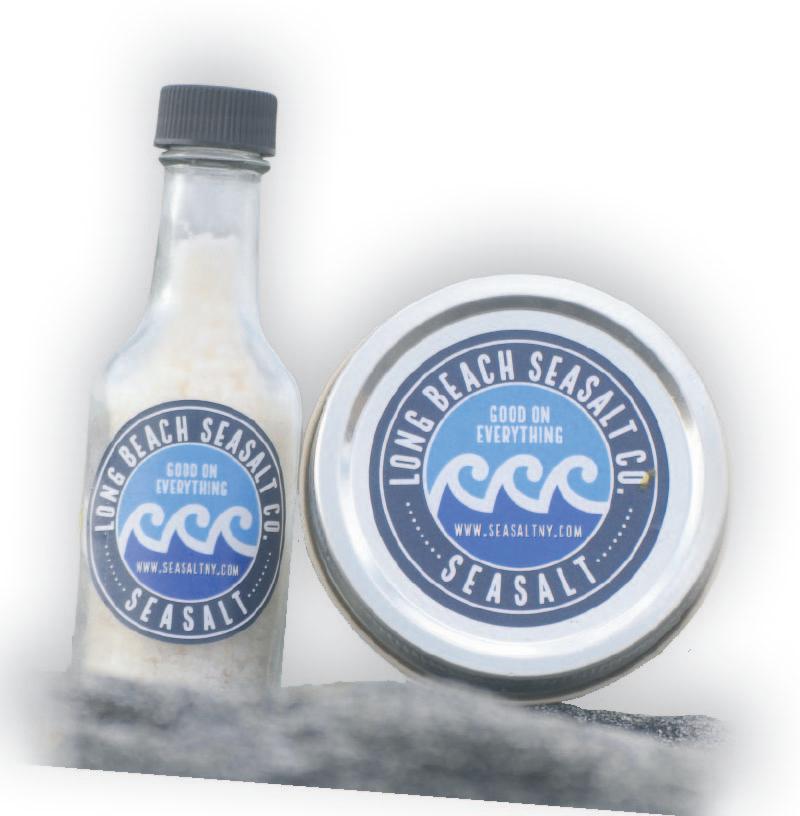
ADVERTISING SALES Ellen Frisch PUBLISHER Stuart Richner
VICE PRESIDENT SALES
Rhonda Glickman
CREATIVE DIRECTOR AND LAYOUT DESIGNER
Jeffrey A. Negrin
Long Beach Magazine is published by Richner Communications, Inc. and is distributed by USPS to households and businesses in Long Beach, N.Y. and vicinity. Distribution is supplemented via hotels, restaurants, realtor offices, professional offices and similar locations.



No part of Long Beach Magazine may be reproduced in any form or by any means without prior written consent from the publisher. The views expressed by contributors are not necessarily those of the publisher, editor or staff of Long Beach Magazine.



Long Beach Magazine

2 Endo Blvd., Garden City, N.Y. 11530 Voice: (516) 569-4000 • Fax: (516) 569-4942


A supplement of the Long Beach Herald
© 2022 Richner Communications, Inc.









Water so clear ‘you could see your toes’
By James Bernstein Photos by Tim BakerThere are no swimmers any more. People who fish do so for sport, declining to eat what they catch. There is an acrid odor emanating from the channel.

But, if city officials’ efforts come to fruition, Reynolds Channel will come back to life.


A few months ago, the Federal Emergency Management Agency awarded Nassau County $71.8 million to bolster what is called the Western Bays Resiliency Project. The goal is to not only prevent flooding, but also to clean up the dreadful environment of the channel. The bonds will be reimbursed through state and federal funds.
The Long Beach City Council in May approved a $125 million bond to convert the city’s current wastewater treatment plant at the northwest end of National Boulevard. An aging plant sits at the site currently and the plans are to convert it to a pumping station, which will divert all of
the raw sewage via a new 3.5-mile pipeline to the existing Nassau County sewage treatment plant at Bay Park.
Long Beach’s conversion is part of a project that will transfer untreated sewage to the state-of-the-art Bay Park facility, which began to see upgrades after Superstorm Sandy, with the process continuing. Nassau County will maintain and manage an 11-mile underground pipeline from the Bay Park treatment facility to the ocean outfall at the Cedar Creek treatment plant in Wantagh. The ocean outfall, which is a pipeline [or tunnel] that discharges municipal or industrial wastewater, etc. into the ocean, is approximately 2.5 miles off the South Shore of Nassau County. A portion of the pipeline, about 7 miles, is an old conduit that sent fresh water into Brooklyn in the late 1800s and early 1900s. Rather than remaining a decomissioned pipeline, it is being repurposed
Continued from page 9
for the conveyance project, which will divert the effluent out of Bay Park to the Cedar Creek ocean outfall. While Point Lookout, which utilizes cesspools, is not currently expected to undergo any disposal changes, there is a study underway to look at other options for Point Lookout.




Currently, Reynolds Channel receives the treated effluent from about half of Nassau County, adding up to more than 50 million gallons a day. When the Long Beach plant was built in the 1950s, it was modified to accommodate all the effluent going into it at the time. Over the last couple of decades the county has realized that dumping that much effluent into a body of water that doesn’t completely flush out each day is not environmentally sound. Although the tide goes in and out, it doesn’t completely transfer water out to the ocean. At one point, there was a plan to install an outfall pipe from Reynolds Channel, but, at nearly $1 billion, it was financially prohibitive. Officials realized the most financially and environmentally feasible plan for Reynolds Channel is the conveyance pipeline taking effluent from Bay Park to the Cedar Creek ocean outfall.
“This is one of the most regionally significant effects we’ll see in our lifetime,” said Long Beach Public Works Commissioner Joe Febrizio, of the millions of gallons of treated water flowing into the channel. “It’s going to eliminate up to seven million gallons of wastewater that are pumped into the bay daily [from Long Beach, as well as the millions from other parts of Nassau County]. It will eliminate nitrogen and be a benefit for the ecosystem and the community.”
“In three years,” Febrizio said, “the city will be
out of the sewer business.”
Rep. Kathleen Rice (D-Garden City), who represents Long Beach and who helped secure the FEMA grant, said: “With our climate changing and sea levels rising, Long Island faces the troubling reality of stronger and more frequent storms. By repairing tidal wetlands, this project will strengthen storm resiliency along our shores and improve water quality.”
She said also that [as nitrogen dissipates from Reynolds Channel] “it will allow our native plant and animal species to return and thrive.”

Nitrogen makes plants grow, but when too much nitrogen flows into a body of water, fast-growing plants out-compete and kill slower-growing, possibly more beneficial, plants, according to the Nature Conservancy (nature.org). In addition, decaying plants use up oxygen, which kills fish and other marine life.
The channel gets its name from William H. Reynolds, who is credited with developing Long Beach. A New York State senator, he visited Long Beach — then little more than a few buildings sitting on a sand dune — in 1907 with an eye to development. Reynolds, whose development company built many of the large homes along the beachfront, was elected its first mayor in 1914.
It is likely Reynolds’ ambition toward Long Beach grew out of the success of his project in Coney Island, the amusement park Dreamlands. From there, he scouted possibilities on Long Island, and came to Long Beach in 1906.
He got together with some of the biggest bankers in Brooklyn and Nassau County to invest in what he called Long Beach Estates,
a resort town that featured shorefront homes, cottages and large hotels. The largest was the Long Beach Hotel, which burned to the ground on July 29, 1907. Eight people, including Reynolds, were forced to jump out a window to safety. He had paid $1.5 million for the property only two months before. While it was a total loss, Reynolds had possession of the whole waterfront. He and the bankers bought the rest of Long Beach from the Town of Hempstead.
To add to Long Beach’s desirability, he hired more than 320 men, working in shifts twenty-four hours a day, to dredge the waterway, creating a channel 1,100 feet wide, 12 feet deep and 5 miles long on the north side of the island. It was the largest dredging project of its time, surpassed only by the Panama Canal (brownstoner.com). The channel now could accommodate steamboats and seaplanes
Reynolds and his business partners built the boardwalk, more homes and more hotels. The boardwalk, one of the main attractions, was 50 feet wide, decorated with electric lights on both sides. Streets, sewers, gas and electric conduits were laid out. Trees were planted on just about every street.
Reynolds ordered that every building be constructed in Mediterranean style. Like many developers of the time, Reynolds required that the homes could only be occupied by white, Anglo-Saxon Protestants. When his company went bankrupt in 1918, that restriction was lifted.
Ever the showman, Reynolds also built a theater, Castles By the Sea, with a
huge dance floor. Long Beach began to attract the Hollywood crowd. Visitors included Mae West, Zero Mostel, Humphrey Bogart, Rudolph Valentino and James Cagney.
It wasn’t all easy-going for Reynolds. He had some brushes with the law, as explained by historians at the Long Beach Historical Society. Court records show he was indicted twice, once for stealing $80,000 from city funds. He was found guilty and removed as mayor. But on appeal, the charges were dropped. These blemishes didn’t damage his standing in Long Beach, whose residents made him the first city manager when Long Beach became a city in 1922.
There is no doubt Reynolds would be pleased about the plans for his namesake channel. The conversion and cleanup are all good news for the city, and also for its residents.
Photographer Michele Huttler Silver and fellow photographers often meet at Magnolia Pier to shoot sunrises and sunsets.
“It is an ideal place to photograph,” said Huttler Silver, owner of Michele Silver Photography. “It would be great if it became a destination for families and others to come and enjoy themselves. The ice skating rink is there, a skate park and other things. If it became a destination for swimming, canoeing, kayaking, paddle boarding and other water activities, it would really blow up.”
There has been talk through the years about reviving Reynolds Channel, but there was little action as Long Beach grappled with deep financial issues that
threatened its stability.
Now, it appears, action will be taken — with the help of FEMA.
Jimmy Hennessy, 55, a lifelong resident and retired Hewlett public school teacher, remembers wading in Reynolds Channel, but would not do so now.
“There’s a nasty smell there now,” Hennessy said. “If you go swimming there, you come out with an oil slick all over your body.”
He has tried fishing a few times, but said, “There were hardly any fish because the water is so dirty.” Hennessy said he is not in love with the idea of pumping the treated wastewater out into the Atlantic Ocean. But, he added, “It seems it is about the only option at this point.”
Once the conversion and cleanup are completed, Adrienne Esposito, executive director of the Citizens Campaign for the Environment in Farmingdale, estimated that the channel will look and smell differently in about a year or two.

“People will be seeing a difference,” Esposito said. “Our goal is for people to wade into the water and see their toes.”
Esposito and Chris Gobler, a professor at Stony Brook’s University’s School of Marine and Atmospheric Sciences, noted that the appearance in and around the channel will be dramatic.

“The marine habitat will improve,” Gobler said. He envisions people clamming again, fish that can be eaten, swimming, sail boating and water-skiing.
“It will take some time, but it will be different,” Gobler said. “I’m an optimist.”

Cheers to the season!

















Apple cider takes on a grown-up twist with the addition of Calvados, an apple brandy produced in Normandy, France, in this festive autumnal cocktail. • Ice cubes as needed • 1/2 cup (125 ml) apple cider • 1/4 cup (60 ml) Calvados • 1/4 cup (60 ml) brandy • 1/4 cup (60 ml) fresh lemon juice • 2 tsp. maple syrup • 4 thin apple slices, cut sides rubbed with lemon juice




Fill a large cocktail shaker half full with ice. Add the apple cider, Calvados, brandy, lemon juice and maple syrup. Cover with the lid and shake vigorously for 10 seconds. Strain into 2 highball glasses filled with ice. Garnish each glass with 2 of the apple slices and serve immediately. Serves 2.

 By Sylvia E. King-Cohen Photos by Tim Baker
By Sylvia E. King-Cohen Photos by Tim Baker
One of Long Beach’s true treasures is shining a distress beacon. Officials of the Long Beach Historical Society and Museum say they are in danger of losing the home if they don’t get an infusion of $200,000.
The Long Beach Historical Museum, at 226 W. Penn St., is celebrating its 25th anniversary and Co-Presidents Karen Adamo and Jeanne Browne are working hard to make sure it sees its 50th anniversary.
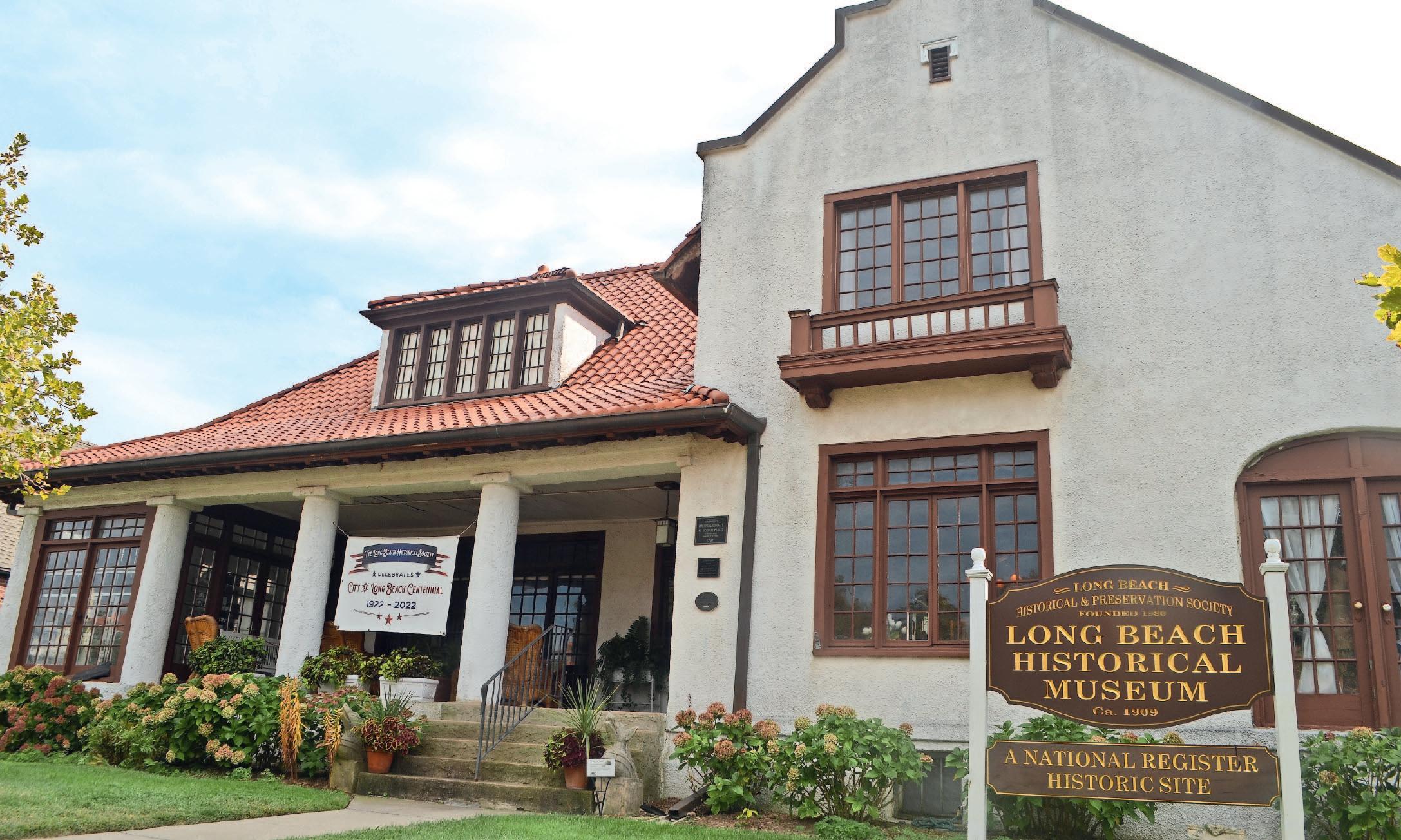

“We’ve had to learn to write grants and we’re novices,” says Adamo of the arduous process of applying for money.
“In the past, our biggest fundraiser was the arts and crafts fair on the boardwalk that covered our mortgage payment, utilities and what we needed to maintain the building.”
Unfortunately, Covid-19 prevented them from having it for two years, and construction near the boardwalk



prevented them from hosting the a further two years. They’ve gone entity’s reserve and still looking a list of projects that include exhibit doors, stucco work and painting. “The problem with a house like is that you can’t just hire anyone repairs,” Adamo explains. “It has someone who specializes in restoration of these types of buildings. The estimate we have for repairs is $150,000. We also need income to pay regular bills and insurances.”
lucrative fundraiser through the to restore room house like this to do has to be
looking painting. a hire explains. specializes
and the
Calling the Long Beach Historical Museum and the actual structure a gem is not hyperbole. The museum houses artifacts, historical papers, archival material, and other information that likely can’t be found anyplace else. “We get calls
Continued from page 13 from people all over the country who have found historical papers and other items in a basement somewhere that they send to us,” Adamo says. “We constantly have people locally who come to us and tell us some family story and want to know the facts. Sometimes, they’ve purchased a house and know nothing about it.”
the necessary volunteers to pour their hearts into a project.”












by the Historical Society from

Long Beach was founded by Sen. William H. Reynolds (Feb. 29, 1868Oct. 13, 1931), for whom Reynolds Channel is named. The house was purchased from the heir of vaudevillians Florence and Lillian Barrett, known as the Barrett Sisters. Built in 1909, it was purchased by the Historical Society from Norma Lester, great-niece of the Barretts, in 1997.

While things may sound bleak, both Browne and Adamo are optimistic.
“One thing we need is more volunteers, hopefully younger volunteers,” Browne says. “It is difficult to offer a range of events and programs without
That Winchester Mystery House mansion in San

It was volunteers who poured their hearts and sweat equity into restoring the house to its original glory. That includes the decorative floors, architectural ceilings, original wallpaper and even a process called Lincrusta, which is a deeply embossed wallcovering invented by Frederick Walton in 1877 and commonly found in Victorian properties and restoration projects. Other examples of its use were on the Titanic, the White House and the Winchester Mystery House mansion in San Jose, Calif.

“The loss of the museum would be devastating for our community,” says Long Beach City Council President Karen McInnis. “More than just a beautiful building, the museum contains the very history of Long Beach itself. On this, the City’s centennial year, I truly hope our residents and other benefactors rally around the Historical Society to keep the museum’s doors open.”
residents and other benefactors rally around the Historical Society to keep the museum’s doors volunteers hours and the return of such programs as tea
Browne says having more volunteers could allow them more open days and longer hours and the return of such programs as tea parties, club meetings, specialized and group tours, and expanded schools programs. While some of these are offered on an abbreviated some of these are offered on an abbreviated
“The
basis, Browne and Adamo look forward to enlarging their calendar.
Other draws include original subway tiles in the kitchen, the restored chauffeur quarters in the garage, original stained glass windows and woodwork and even a saltwater tap in the bathroom. The furnishings are a wonderful example of how a beach house or second home would have been furnished.
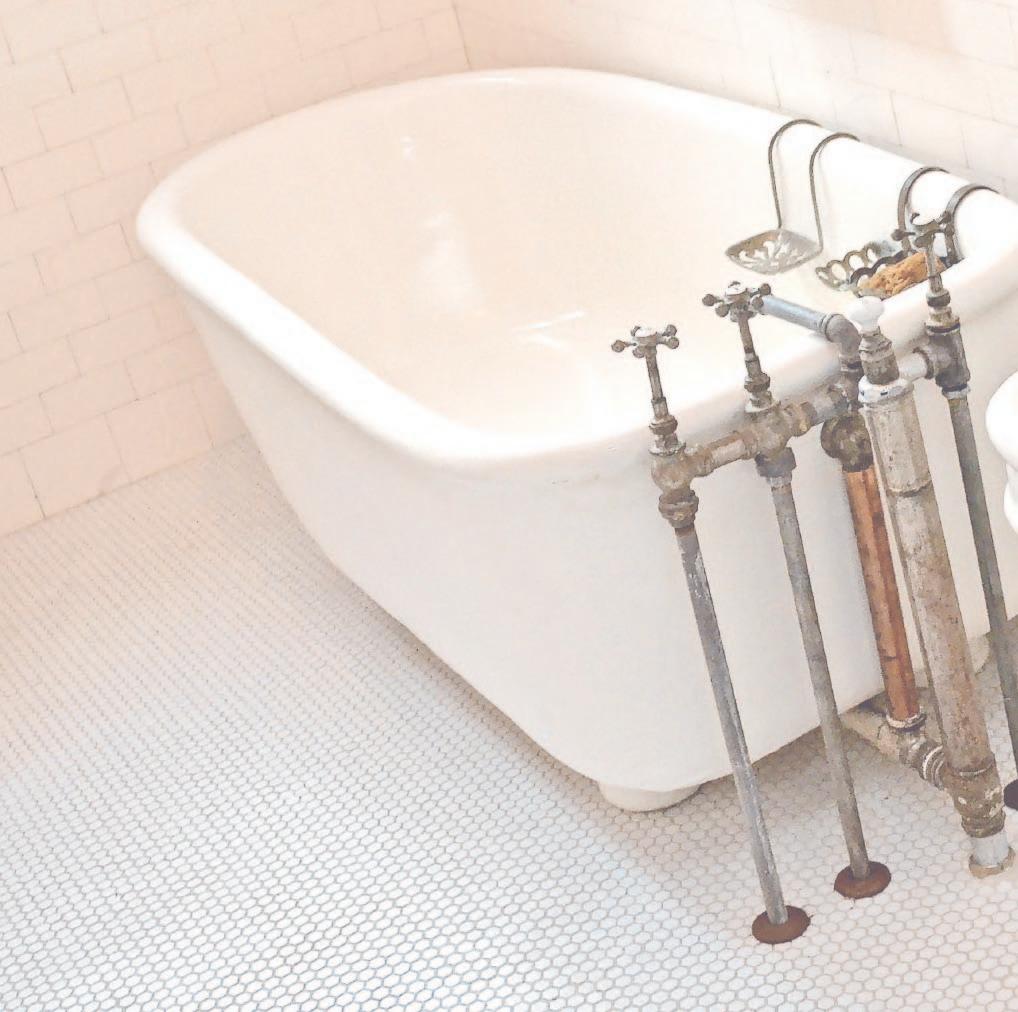





honoring the 100th anniversary of Long Beach being named a city and the 25th anniversary of the museum.

In December, the Long Beach Historical Museum will host its popular holiday festival. Check their website for dates and times. The museum also hosts monthly art exhibits and lectures.
“It would have been a mish-mash of leftovers,” Adamo says. “Some of the things are original or of the period, but some are not, as it would have been done.”
It is a treasure for those who are fans of architecture and arts and crafts-era furniture. The Long Beach Historical Museum also houses a plethora of photos from throughout Long Beach history.
“It would have been a mish-mash but some are not, as it would have museum in your town,” Browne says. Even so, their current situation does
“It is hard to put a value on a museum in your town,” Browne says. Even so, their current situation does demand that they look for different revenue streams. This year they were able to host their very popular yard sale in September, and in October they’ll host the Centennial Gala
Looking for a volunteer opportunity? The museum needs docents, grant writers, archivists, educators, those versed in finance, fundraisers, gardeners, gift shop clerks, publicists, social media aficionados and office staff. In short, they’re happy to use whatever skills you have to offer.
For more information, visit the Long Beach Historical Museum at 226 W. Penn St. Call (516) 432-1192 or visit their website at longbeachhistoricalsociety.org.
Memberships are $25 individual, $40 family, $20 student/senior, $50 donor, $100 sponsor, $200 patron and $500 benefactor. Membership offers advance notice and advance ticket sales on all events. Tours are free, but donations are appreciated.
or 16 years, Rich Papetti was the sole person standing in the way of the City of Long Beach’s wastewater flooding into Reynolds Channel as people slept.
He retired last year as the midnight-to-8 a.m. operator at the Long Beach Wastewater Treatment Plant, where he had worked by himself for much of his 26 years, monitoring the machines, kicking out trespassers who were lost or drunk, troubleshooting problems and calling for backup in emergencies.
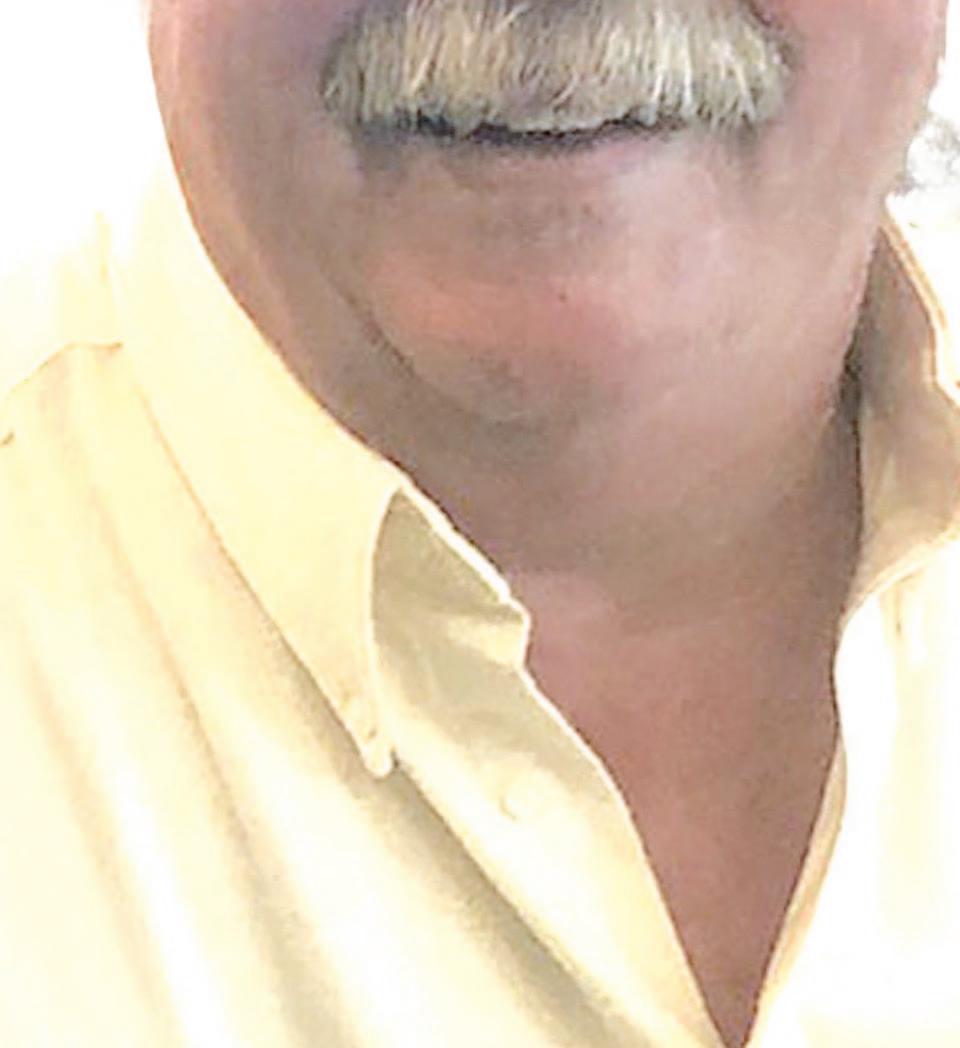
“I sleep like a normal person now,” says Papetti, 66, who slept a few hours before and after his graveyard shift so he could usher his three children off to school and greet them upon their return.
He has lived in Long Beach for 41 years and could be spending retirement on the sands, but he plans to up his game as Co-President of the Long Beach-based C.U.R.B. Citizens United to Remove Barriers is a nonprofit that helps mobilityimpaired people by paying for ramps, wheelchairs and other improvements. For major work, C.U.R.B. buys raw materials for Rebuilding Together, a home improvements nonprofit, to make upgrades.
Papetti visits residents, primarily on Nassau’s South Shore, to assess what’s needed and order supplies.
“When I see how happy people were to get out of their houses where they were trapped for years and they come out into the sunshine and say how wonderful it is
to get on the boardwalk, how can I not help,” he says.
While the group’s annual bike ride fundraisers have amassed more than $200,000 in the past 19 years, Papetti believes a lot of Long Beach residents remain prisoners in their homes because they don’t know about the small nonprofit, which he runs with CoPresident Barbara Toney.
Boosting C.U.R.B.’s visibility will be the focus of brainstorming sessions with Toney and the three men who started the bike fundraiser when they were in their early teens — his son, Billy, and friends, Matthew Demerest and Casey Kantor.
The Papettis have treated C.U.R.B. as a family affair for more than 20 years after getting to know its co-founder, neighbor Jim Conlon, who died a few days before the inaugural bike ride.
When the retiree thinks about the importance of family, he harks back to his father, who coached him and his siblings in various sports. Rich was 10 when his father died. Papetti says he never took up sports again until he had children and started coaching them. While the graveyard shift was hard on his sleep, it gave him more time with his wife Linda, a school secretary, and their three children.

Papetti plans to spend some retirement time babysitting their two grandchildren, with a third one on the way, and to visit as many East Coast beaches as possible.
As he likes to tell his children: “Keep smiling and follow your dreams.”
A Nassau County resident for over 30 years, Karla Grasso is very familiar with a variety of neighborhoods on the south shore of Long Island. Energetic and full of enthusiasm, she brings a fresh spirit to real estate. With 37 years' experiencein the garment center, she

consumer is looking for. Kind and spirited by nature, she is hard working and resilient. Karla's love of the neighborhood she now lives in brought her to work here too. You will often find her walking or biking on the boardwalk or taking yoga classes in one of our local

A Nassau County resident for over 30 years, Karla Grasso is very familiar with a variety of neighborhoods on the south shore of Long Island. Energetic and full of enthusiasm, she brings a fresh spirit to real estate. With 37 years' experiencein the garment center, she learned early on the power of listening to your clients. A problem is just another word for a solution if you truly listen to what the consumer is looking for. Kind and spirited by nature, she is hard working and resilient. Karla's love of the neighborhood she now lives in brought her to work here too. You will often find her walking or biking on the boardwalk or taking yoga classes in one of our local yoga studios.If you're looking for a gentle hand to drive you through the process of a real estate transaction, Karla will help you.
Karla was outstanding throughout the process of purchasing our property in Long Beach. From the start, she was profes sional in her handling of the offers. Karla was always acces sible and clear in her communications as we approached the closing date. While we have worked with many realtors in the past, Karla went above and beyond in making the sale in a personal way. We would highly recommend her to friends and family.
Working with Karla was a great experience! In addition to really knowing her stuff, she's a caring and compassionate person who goes above and beyond for her clients. We faced the huge task of emptying out the home of a relative and getting it ready to sell, and Karla's ongoing advice and (literal) hands-on support enabled us to stay on track and get it done. Most importantly, her judgement was spot-on when it came to pricing the house; we had numerous offers and results were beyond our expectations. From start to finish we really enjoyed working with Karla, who is lots of fun in addition to being a smart, savvy professional. We can't recommend her highly enough!
Working with Karla was a great experience! In addition to really knowing her stuff, she's a caring and compassionate person who goes above and beyond for her clients. We faced the huge task of emptying out the home of a relative and getting it ready to sell, and Karla's ongoing advice and (literal) hands-on support enabled us to stay on track and get it done. Most importantly, her judgement was spot-on when it came to pricing the house; we had numerous offers and results were beyond our expectations. From start to finish we really enjoyed working with Karla, who is lots of fun in addition to being a smart,
It’s the most wonderful time of the year — and that means it’s time to enjoy the sights and sounds of the holiday season in Long Beach. From time-honored traditions to brand-new experiences, outdoor festivities to indoor fun, in-person and virtual gatherings alike, a warm and jolly time awaits.
Long Beach City Council Turkey Trot
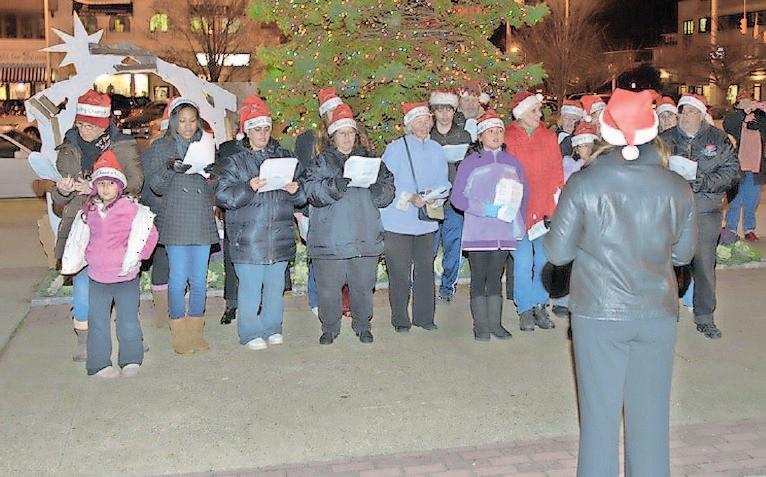
Nov. 20, 9 a.m.
Long Beach Boardwalk at New York Avenue
Hundreds of Long Beach residents, and maybe even some turkeys, will be sure to take part in the annual trot on the Long Beach boardwalk. People will be able to register up until 8 a.m. that day at the Long Beach Catholic Regional School gymnasium. People and birds of all ages will be able to run down the boards, with a 1-mile children’s race and a 10K for adults available. For more information, visit LongBeachNY.gov.


Long Beach City
If you aren’t able to attend the menorah lighting or you miss the illumination of the Christmas tree, there will still be plenty of time to enjoy the lights that bring so much warmth and wonder to the season. The Long Beach menorah will remain lit from Sunday, Dec. 18, the first night of Hanukkah, through the end of December in front of City Hall on West Chester St. The Christmas tree will also remain lit there until at least Jan. 1.
Date and Time TBD
More than 1,000 folks are expected to don bathing suits and wacky costumes and dive head-first or at least toes-first into the frigid Atlantic Ocean for this wintertime Long Beach tradition, which operates as a fundraiser for Make-A-Wish Metro New York. Organized every year by the Long Beach Polar Bears, the event usually takes place on Super Bowl Sunday the day that club co-founders Pete Myers and Kevin McCarthy took their first plunge in 1998 although the 2022 plunge was the week after.

In 2000, Myers and McCarthy decided to turn their plunge into an annual charity event for MakeA-Wish to honor their friend Mike Bradley’s son, Paulie, who died of cancer in 1997 at age 4.
For more than 20 years now, locals and visitors have proudly and energetically plunged into the freezing waters for this heartwarming cause. As of 2021, the group had raised more than $7 million to help fulfill the wishes of children with life-threatening medical conditions.
Dec. 1 – Dec. 31, Ongoing
Throughout the City
The Long Beach Chamber of Commerce and City of Long Beach will host the third annual Holiday House decorating event to bring some light and love to residents amid this special season. This year’s theme is not yet confirmed.

Residents are encouraged to sign up to participate in the contest and adorn their properties with lights, wreaths, reindeer and more.
Beginning in the middle of the month, everyone is invited to drive past the decorated homes by following a digital map created by the Chamber of Commerce. The public will have the opportunity to vote on their favorite decorated house via Facebook, and sponsored prizes and awards will be distributed for People’s Choice and Judge’s Choice. For more information, follow the Long Beach, New York Facebook page and go online to LongBeachChamber.com.
Dec. 10, Time TBD
West Beech Street

Among the most highly anticipated returning holiday traditions in Long Beach is the West End Electric Light Parade, which is back and better than ever after going dark in 2020.
Held once again on the second Saturday in December, the 2022 parade will travel down West Beech Street beginning at Ohio Avenue. Antique cars, fire trucks, floats and bicycles, all wrapped in glittering lights, are just some of the seasonal sights that will appear. In the past, the Chamber of Commerce has distributed awards to members of the parade procession in categories such as Best Walking Group, Best Vehicle, Most Unique and Most Festive.
Expected again this year (as in the past) parking will be available at Long Beach Catholic School at 735 W. Broadway, where shuttles will be waiting to take folks to the West End. In addition to the main event, restaurants in the West End usually plan to roll out Electric Light Parade specials for visitors, making it truly a night to eat, drink and be merry.
At Douglas Elliman, we understand that real estate is a journey and that personal relationships built on trust are the key to finding your way home. Powered by national scale and global reach, with local market expertise and data-driven insights, we are committed to being a trusted partner on your real estate journey.



Located in Long Beach, New York, our facility combines the fantastic oceanfront view and experienced, caring staff. Known for their warmth and outstanding care, experience the Beach Terrace difference.






There’s an amusement park for the mind at 111 W. Park Ave.
It’s a place where you can watch a movie, listen to music, play a 19th Century Chinese game, attend a history class, hear a story or even read a book. If you haven’t guessed yet, we’re talking about the Long Beach Public Library, of course, where you can check out an audio book on compact disc, load up an e-book on your mobile device or choose from a huge selection of hardcovers. And then there are the programs. “We offer all sorts of programs available in person, online and in hybrid form,” says Director Tara Lannen-Stanton. “You can access them anywhere you are.”
One of those popular programs is the local history archives, which includes photos and postcards. The library offers a monthly local history program online, as well as having a Long Beach-specific historian on staff. Another offering that is beginning to get more attention is the Museum Pass Program, which allows
library patrons to come in and pick up or download a pass that allows them free admission to Long Island and New York City venues.
Valerie Howit-Winter, who says she is a daily visitor to the library, uses the Museum Pass Program to visit venues across Long Island.
“The admission price for some museums can be expensive, so to have the pass is really nice,” says the Long Beach native. “It really is an extension of my home. I check my email here, watch movies. I remember before Covid there would sometimes be standing-room-only for some events. It really is a hidden gem that people tend to forget about.”

Fourteen-year-old Keyi Chen comes to the library to study.
“It can be loud at home,” says Chen, who attends Long Beach High School. “I was born in China and came here at 7 or 8 years old. Coming to the library helped me to learn more about U.S. culture and acclimate when I first got here.”
Chen, and any member of the public, can come to the library knowing it has resources that stretch beyond the imagination.
“In general, libraries on Long Island and in the New York City area are very well resourced,” Lannen-Stanton explains of the services that are free
“We’ll always have Storytime,” LannenStanton says. “There is just something so powerful about storytelling and having someone read to you.”
remains
to all Long Islanders. “It is very easy to get a book from anywhere through our inter-library loan program.”
That even includes select selfpublished books, local authors and local subject books.
The library also is a great place to host a meeting. “The library is often the only free meeting space available to all community members,” Lannen-Stanton says. “You don’t pay, and you don’t have to be a library member.”
Need a notary? Lannen-Stanton says the library added one after listening to suggestions submitted through the “Present a Program” option where “the community can go on our website and submit an idea.”
Chen says she wishes she could avail herself of more of the library’s resources.

“I like to read because it keeps me grounded and off the computer. Our age group, we have to focus on classes and homework so much that we don’t really enjoy a lot of what the library has to offer.”
That includes exercise classes, book clubs and discussions. There’s even Mah Jongg, the popular tile-based game enjoyed by players of all ages.
Lannen-Stanton, who became director in 2019, says the Covid-19 shutdown forced the staff to think on its feet, and the team responded with flying colors.
“Because of the Covid-19 pandemic, we had to go online,” Lannen-Stanton says. Our online programs became so pupular that we had to continue them [post-pandemic].
“I am so proud of how our staff came together during the pandemic,” she says. “They very quickly opened up different opportunities for the community.” She’s even more excited about the future of the library. Renovations for the first floor are expected to begin in late 2023.
The 9,000-square-foot project will involve modernizing the entire floor, adding more natural light, upgrading the circulation desk and adding a dedicated local history room and other flex space.
“You’ll still see books when you walk
into the library,” Lannen-Stanton says with a laugh. “You’ll also see tables, comfy chairs for reading, study spaces and other welcoming areas.”
The library will be open during the renovations, which are slated to finish in late 2024, but she says, as with all construction, things can happen. The branches in Point Lookout and the West End also will offer additional services during renovations. Expect to also see pop-up libraries throughout renovations.



“We want to better utilize available space,” says Lannen-Stanton, who adds that this is the first renovations since the 1990s, if you don’t you count the repairs that were done post-Sandy.
She also touts the “outside the walls of the library” options where the staff works with community-based programs. There is also the library’s website: longbeachlibrary.org.
“The options are wide open,” she says. “All types of programs are on the table, even theatrical programs, the sky’s the limit.”
One champion of the library is Long Beach City Council Vice President Elizabeth Treston. “You can see your show, immerse yourself in a museum experience, take out a book or sign up for a class,” Treston says. “It is open to all of our residents and their programming ensures that all ages and abilities can learn something new. These renovations are going to be great.”
Some may fear that with all the changes, their favorite programs may go by the wayside. There is at least one program that Lannen-Stanton says will never go away.
“We’ll always have Storytime,” Lannen-Stanton says. “There is just something so powerful about storytelling and having someone read to you. We actually have parents who enjoyed Storytime as children, took part as teens and they’re now bringing their children here. We’re always looking for new ways to engage children, for example, adding a craft to Storytime.”
Lannen-Stanton has another pet
project: reading. She thinks it is her responsibility to be well-read. While she’s a big fan of science fiction, fantasy and romance, she also regularly reads biographies, bestsellers and books by local authors and about Long Island.

“I try to read a diverse selection because if a patron asks me for a recommendation, I like to be familiar with a range of books,” says Lannen-Stanton. “There are definitely still readers out there. We’ve had a marked increase in attendance at our book clubs in the last few years. Even if you’re not a reader, we’re still very much a place to come.”
Got a question about Long Beach? Give Eileen Pollis a try. When it comes to our city’s history, she has you covered. Pollis, who is the local history librarian at the Long Beach Library, spends part of her time combing through ancestral databases, census reports, government records and local information to glean their secrets.
“I’ve always had an interest in history, so I just sort of fell into being the historian,” says Pollis, who will celebrate her 25th anniversary at the library in the spring. “I started out dabbling and now I sort of do everything.”
Part of “everything” includes finding answers about obituaries, family history and queries from homeowners.
When new residents move into Long Beach, she often helps them with the history of their home, she says.

While some searches are simple, she has done things such as reuniting a family with remains found in Korea and helping a woman to track down a photo of her birth mother.
“It is very gratifying what I do,” Pollis says. “I am helping people. Sometimes I am correcting information that people have believed for 20 or 30 years.”
A clever detective who loves digging up and sharing information, she also likes teaching others how to conduct a fruitful search. Each month she leads a class on a different historical-tracking subject. All her programs are archived on the library website (longbeachlibrary.org).
What’s the best way to solve a mystery? Pollis suggests starting with the Google search engine, which will likely lead to newspaper articles.
“Newspaper articles give you a time frame from which to search,” Pollis explains of her process. “There’s the U.S. Census and the information it contains. There are directories. You can find out so much about your history, your house, your family.”
All of those databases can be accessed at the Long Beach library, she says.

With Pollis’ efforts, almost everyone and everything has a history that can be uncovered.
That includes not just people, but homes, businesses, cemeteries and organizations, to name a few. Often, once you find that first piece of information, other info begins to cascade.
“Ancestry.com is nice, but [subscriptions are] expensive,” Pollis says. “With our resources, you can do a lot of research yourself.”
Even better, just ask the expert.
“Of course,” she says, “you could just come in and ask me to help you.”











Mount Sinai South Nassau Long Beach, Primary Care 761 Franklin Boulevard Long Beach, NY 11561 516-544-2351
southnassau.org/lbprimarycare
E. Bay Dr. E. State St. Long Beach Blvd. Lincoln Blvd. E. Harrison St.
At the corner of E. State St. and Franklin Blvd. Franklin Blvd.
If you’re lamenting the end of summer and can’t bear the thought of the final weekend of the Long Beach Farmers Market, get ready to rejoice. The Holiday Market is making a comeback. During December you can enjoy the smell of hot cider and other delights as you browse vendors selling holiday-themed goods and holiday gift items in heated comfort.
“It is going to be very festive,” says Debbie Grattan, market manager. “It will be half food, half arts and crafts. There will be greens, root vegetables, Christmas wreaths and holiday items.







It is great soup weather, so expect to see produce for making soup.”








The regular market runs through the last Wednesday of November, so there still is time to have your pick of the late harvest. The market, ideally situated near the Long Island Rail Road station, Starbucks and the Long Beach Library, is convenient and has ample parking.
Grattan says that when they opened the market 13 years ago, the goal was to be as local as possible. “We also wanted to help small businesses. I have people who come to the market and will buy a little something from each vendor just to help out rather than getting things from the store.”
Lisa Urbont, who enjoys strolling the
of suck up the price, but it is worth it because it is fresh.”
“I come at least once a month,” says Lisa Urbont, who enjoys strolling the arts and crafts stalls on Saturdays. “All the produce is fresh and the selection is interesting. Yeah, you have to kind of suck up the price, but it is worth it because it is fresh.”
Jeanne and Bob Hoenig come to the market twice weekly to pick up produce, flowers, bread, seafood, and other things. On a recent visit, they were lamenting the absence of the seafood vendor.
“The seafood is so delicious,” Jeanne Hoenig adds, “and so are the chicken burgers.”
Bob Hoenig is a big fan of the lively entertainment offered on Saturdays.
“It is nice to walk around and listen to music while you shop,” he says. “The
“It is nice to walk around and listen to music while you shop”
Hoenig advises. “The things that go quickly, you stop at those stalls first, like bread — and the seafood.”

businesses. Last winter we found a location [nearby] that allowed us to have about 10 vendors inside and we did that in January and February. It was nice for the business and nice for the market.”
says hand-caught is still the norm. And,
Grattan says their goal of handmade, hand-grown and hand-caught is still the norm. And, the Covid-19 lockdown brought new vendors and entrepreneurs to the market.
“We had a lot of people who decided to follow their passion,” Grattan says. “If you stop to talk to them, everyone here has a story. Our vision was to bring together people who love what they do and who want to sell wholesome, healthy food. And, we have a community of people who come every week.”
Long Beach resident Jeannette Margolis comes to the market on Saturdays to pick up vegetables for a weekly soup. This Saturday she was joined by longtime friend Jean Davis. Margolis says she combines whatever she finds at the market with whatever she needs to use up in her refrigerator.
for chicken soup.”
Davis was on the hunt for parsnips. “Parsnips make the soup,” Davis says. “Being in the center of town makes it easy to want to come here. It is so convenient.”
Grattan says that the number of vendors did go down initially during the pandemic.



“Last spring, we had 10 vendors,” says Grattan, who took over management of the market in April 2021, and hopes eventually to open year-round. “We require vendors to make a commitment to come every week.”
One hurdle they’ll have to overcome is the cold winds that come in off the beach. All agree that you can’t have an outdoor market in the dead of winter in Long Beach.
Peter Scherer, owner of Long Beach Sea Salt Company is one of those vendors who is following his passion. One of the newer vendors, he sells salt that he has harvested locally.
“For me, it is about sharing with the community a product I have harvested right here in Long Beach,” Scherer says. “When I tell people I harvest my salt locally, they are surprised. They didn’t even realize you could harvest your own salt. A lot of people just never made the connection that you can get salt from salt water.”
Scherer says one of the advantages of the market is the camaraderie of vendors and the support of management.
“I’ve been living here for 25 years and I would come to the market,” Scherer says of how he became a vendor this year.

“If you have the time, stop and chat with the vendors,” Grattan says. “They’re all proud of offering the best produce and crafts. And, it is like a community for the vendors and the customers.”



“I like that we can walk to the market,” says Margolis, the soup chef who had purchased celery, eggs, carrots, lettuce and fennel. “I’m picking up things
“This is a good, centralized location with lots of parking, which is important,” Grattan says. “We also have good partnerships with local and Long Island
market,” says Margolis, the soup chef who had purchased celery, eggs, carrots, with lots of parking, which is important,” Grattan says. “We also have good
For more information about the regular or holiday market, visit LIGreenmarket.org. The market is at 59-83 W. Park Ave.
“For me, it is about sharing with the community a product I have harvested right here in Long Beach”
Peter Scherer waded chest-high into the water with a 5-gallon bucket and scooped a bit of the ocean by Lincoln Boulevard — he’s a salt entrepreneur.
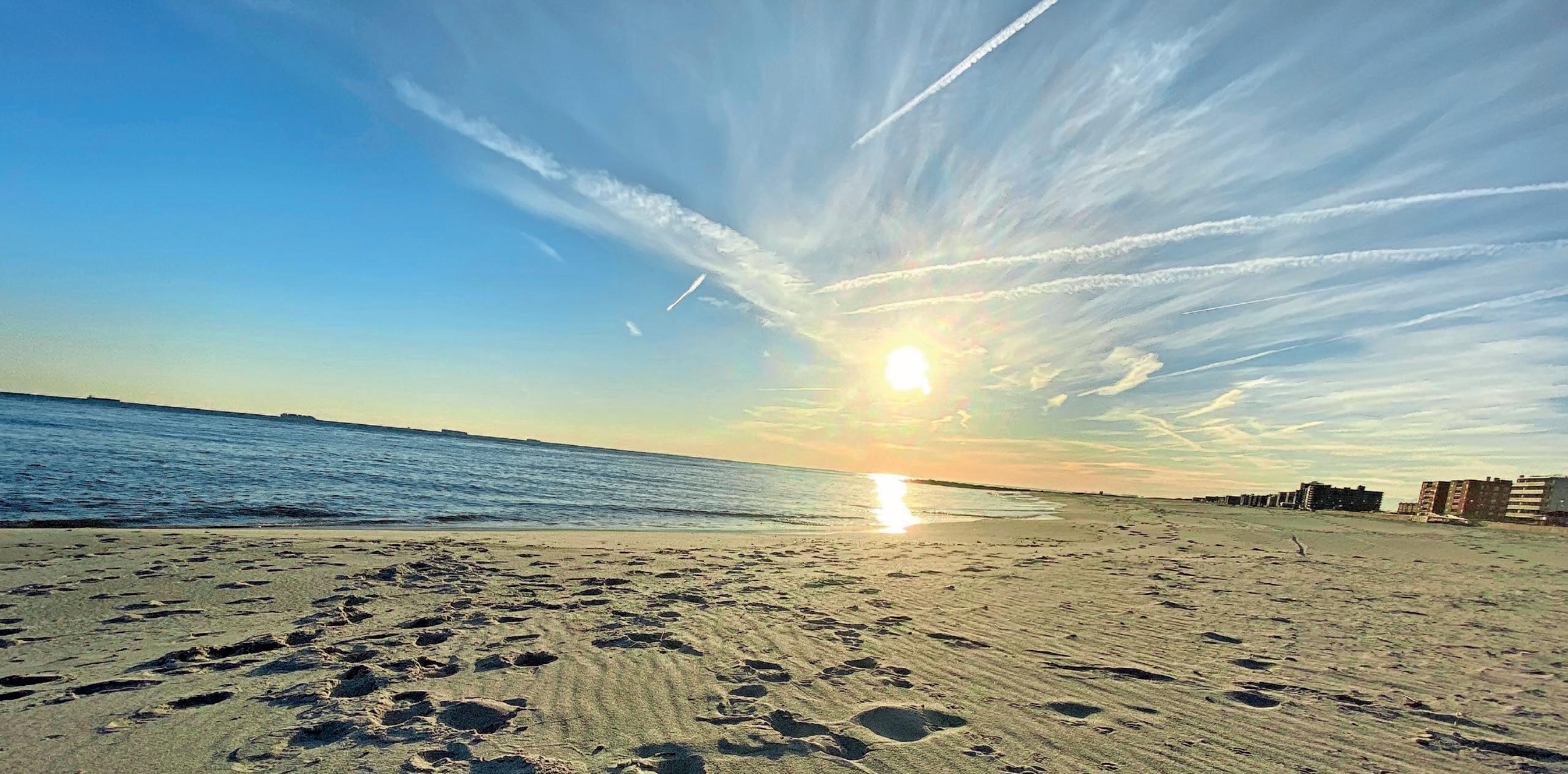

“I’m sure people have made sea salt here before,” says Scherer, 53, a massage therapist who’s lived half his life in Long Beach. “Why not?”
To Scherer, it’s all about feeding, whether it’s the stomach or the soul. A year ago at home, he began boiling ocean water down to its crystalline components after his wife pressed him on what he would contribute as holiday gifts to family and friends. The idea of distilling salt had been filed away in his mind for 10 years, after seeing sea salt sold during a trip to the East End of Long Island.
“I think everybody has an inclination to grow food from the ground or be a cook,” the salt maker says. “I don’t have that magical touch, so I thought this was kind of like a way to celebrate the fact that we live by the ocean.”
He contacted salt makers, researched online, got a state home processor certification and began experimenting with
cooking times.
From ocean to table takes three days, including about four hours of boiling, then 15 hours of baking to yield about four pounds of salt from about 20 gallons of ocean.
Now, his Long Beach Sea Salt Co. brings in about $500 every weekend at the local farmers market, he says. He has convinced a few local chefs to use his salt in their restaurants and Long Beach stores to sell his salt.
“It’s Mother Nature’s gift,” Scherer says. “I am just part of the wheel that’s able to process it and put it on people’s tables.”
If that sounds a bit metaphysical, perhaps it’s because the salt entrepreneur believes in some kind of greater power at work. After all, he has the word “karma” tattooed on his right arm.
For Scherer, the sense that he’s doing what the universe wants him to do is confirmed by what seems like a relatively smooth business venture. He hasn’t made any massive misstep, he says, and hasn’t “overreached” on any decision.
It’s the sort of soul-searching that has guided him through life.
A professional musician for 20 years who still performs, his full-time gig for the past seven years has been as a massage therapist taking care of
the injured or those who just want some pampering. It’s a career he chose after sitting down at the Laurel Diner one New Year and letting a “stream of consciousness” guide him on his next career.
He remembered his mother massaging him when he was a child, he says, and it relaxed him and made him feel good.
At first, Scherer’s batches of salt were “cringeworthy,” he recalls: “It had a bit of a bite. It was a little bitter.”
Scherer says he has fine-tuned his cooking process to create the Long Beach Sea Salt Co. If he boils the water too long, the taste is bitter. To quicken the process, he’s moved the boiling process from his 14,000 BTU stove to a 400,000 BTU propane cooker, the type of system used in the South for cooking massive crawfish boils.

His experimenting has even led him to conclude that the harvesting process affects the kind of salt he gets. Certain locations yield the best-tasting salt, likely due to the mineral’s travels before it reaches Long Beach, he says.
So far, the salt harvester has found two favorite spots, one practically in the shadow of the apartment high-rise where he used to live. Those are his goto locations to maintain not just a highquality salt but a consistency in the taste, says Scherer, who like most artisanal salt makers is mum about where he harvests his salt water.
“When people listen to music, it’s soothes their soul,” Scherer says. “As a massage therapist, it’s a healing act. With the salt, it’s a connection to the ocean. I’m feeding it because it feeds me.”





















I’m feeding it because it feeds me.”
At Baked by the Ocean on West Beech Street, Owner and Executive Chef Catherine Schimenti called Scherer shortly after he started his company and now uses his “dense flake” salt as a main ingredient in her bakery. “I definitely love the fact that it’s a local salt,” the chef says. “We use it for special occasions and put it on top of our cookies. It definitely brings out the flavor of all our sweets.“
Long Beach Sea Salt is a high-end “fleur de sel” salt — French for flower of salt — and is one of six brands of salt the bakery has bought, says Schimenti, who



processed than some other salts. She uses it as a finishing salt, sprinkling it on certain cookies and also on her peanut butter tart. During the pandemic, the bakery owner prepared boxes
of cookies with little packets of Long Beach Sea Salt. “It’s pure



salt is made from a journey.”
“I need to go to where the water has the most current, where the water moves the most,” the salt entrepreneur says. “When I found the spot where that happened, that’s where the salt tasted better. The movement of the minerals in the ocean is a story. This salt comes from mountains, from the streams. The salt is made from a journey.”

As a business newbie, he learned year ago after plonking them down on a bare, folding table at the market.

tequila to go with his salt for people to try. He also is branching out, experimenting with garlic salt,
Beach as synonymous with sea salt the
As a business newbie, he learned about marketing from other vendors at the Farmers Market. He sold barely any bottles of Long Beach Sea Salt a year ago after plonking them down on a bare, folding table at the market. Now, he spreads out a tablecloth, puts out limes and lemons and brings tequila to go with his salt for people to try. He also is branching out, experimenting with garlic salt, herbal salt and other blends. His goal is to help make Long Beach as synonymous with sea salt as the East End is for artisanal food.
“It has a familiar taste and it’s in the air anyway,” he said. “It’s on us. It’s part of our life here.”
“It’s Mother Nature’s gift,” Scherer says. “I am just part of the wheel that’s able to process it and put it on people’s tables.”
to
lemon,











low heat and heat until the sugar has melted. Add the orange and lemon slices and let simmer for 5 minutes. Serve in heat-resistant glasses.







A festive holiday cocktail • 1 candy cane, crushed, for garnish • 2 ounces strawberry vodka • 4 dashes white creme de menthe • 2 1/2 ounces cranberry juice • Ice cubes
Directions Place crushed candy canes on a small plate or saucer. Wet the outside rim of a chilled martini glass with water. Holding the glass by the stem, rotate the rim to coat. In a cocktail shaker, combine vodka, creme de menthe, cranberry juice, and ice; shake until well combined. Strain into prepared glass; serve immediately.

















The City of Long Beach is rich with restaurants, bars, coffee shops, bakeries and everything in between. West Beech Street has its own share of these offerings and brings with it a certain vibe that you can’t get elsewhere. Whether you’re looking for a quiet dinner, an energy-packed night at the bar, a caffeine rush or something to tickle your sweet tooth, you can find it all on West Beech Street.
Looking to while away an afternoon or dazzle a weekend or evening guest? Here is just a slice of what is going on along Beech Street.




891B W. Beech St. • (516) 608-0578
891 W. Beech St. • (516) 432-1400

Next door to Tipsy Scoop is the Dough Hut. This quaint little doughnut and coffee shop serves up conventional and not-so-traditional options. Sure, they have glazed, sprinkled and jelly-filled doughnuts, but that’s not what draws people in. The adventuresome and the just curious —are drawn to Fruity Pebbles, French toast, Snickers, s’mores and bacon (trust me, just try one) varieties. If you’re one of those people who absolutely believes bacon goes well on and in everything, you’ve found your spot. Not ready to swing that far out? No need to worry, you can still get yourself a unique doughnut. Try one of their semi-traditional options such as cookies n’ cream.
They a

out they
Sandwiched between a doughnut shop and a clothing boutique, this ice cream shop entices with both the sweet and the boozy. That’s right, booze. Tipsy Scoop, the wickedly alcohol-infused ice cream shop, gives both those with a sweet tooth and the adventuresome a reason to walk through the door. On their liquor-infused, 21-and-older menu, flavors include Tequila Cake Batter Vodka Martini, Strawberry White Sangria Sorbet the ubiquitous Pumpkin Spice Rum Latte. They also have an assortment of cakes, ice cream sandwiches and boozy ice pops. Don’t worry if there are kids in your party. They have virgin ice cream (vanilla, chocolate and cherry), as well non-dairy options. And, if going out in the cold for something cold little daunting, they offer catering.


What goes great with a doughnut? Coffee. Dough Hut offers their selfproclaimed “best coffee in town.” Put us
to think.


832 W. Beech St. • (516) 432-1338
With a substantial, family-friendly outdoor eating area, a rowdy indoor bar and an upstairs party room, Jetty Bar and Grill is not to be missed.
The orange-colored restaurant is known for its seafood, wings and arepas, so everyone can find a new favorite meal. Of course, they have mussels, clams, oysters, tacos and wings. But, don’t fill up on those. Their arepas, which are corn cakes, are filled with either unctuous pulled pork, spicy jerk chicken, flavorsome beans or sweet plantains.
Not sure which one to order? Ask the table next to you for suggestions, because they’ll probably have a few orders.
The vibe completely shifts once you transition inside. The bar is constantly packed with regulars, as well as those looking for a more energized night out. It gets crowded around the bar, and many filter throughout the interior.
If you’re lucky, it will be a live music night. No, this is not the place for a quiet, intimate conversation, but it is a lively spot to help push away the FOMOs.









1016 W. Beech St. (516) 432-9185
Conveniently situated in the middle of the West End, The Saloon offers a relaxed, Irish pub feel with a quiet outside patio. Their seasonal menu is a mix of traditional pub-style food and restaurant fare. Yes, they have sandwiches, wraps, chicken and salads on their ample menu. Hankering for Dublin fish and chips or shepherd’s pie? You’ll find that here. If you want to feel connected to others, make a beeline for the outdoor patio. Somehow, you get the ambience of the street, but not the accompanying noise. An added bonus it opens onto Beech Street and is an ideal place to see and be seen, but surprisingly quiet and relaxing. The Saloon occasionally offers live music.

870 W. Beech St. • (516) 490-5530
You can follow your nose to this delicious slice (pun intended) of Long Beach. When you do, thank co-owners Raymond Smith, Michael Blackburn and Brittany Improte for getting up early to make sure you can enjoy your breakfast burrito, banh mi sandwich, plato timpico (a Central American breakfast plate of beans, potatoes, baked egg, cabbage, hot sauce and crema) or overnight oats before picking up one of their fresh-baked loaves. They source their grains from farmers and mills all along the East Coast and produce naturally leavened breads made with high-fat European butters. Everything is made from scratch. Their eclectic drinks include sumac lemonade mimosas (21 and older, please), honeybee lattes, kombucha and elderberry sage lemonade. If you miss them at the shop, you can catch them at the Farmers Market on Saturdays.

sandwich,
1034 W. Beech St. • (516) 889-1345
This Mexican-American restaurant is a true Long Beach staple. The menu is expansive, and the side parking lot has been turned into outdoor seating. The Cabana has a little of everything. They do a good job with the basics wings, quesadillas, burgers, and salads. What you want to feast upon are their Irish nachos and specialty tacos (a must try). Now, don’t scoff, but they even have a vegan taco that will cause you to swear off meat (at least for one meal). For the carnivore, The Cabana offers ninespice steak, pork and fish. If the weather allows, check out the outdoor seating that will tempt you with hanging lights, music and a happy crowd that makes the area feel like it was never a parking lot. They sometimes host “pop-up eats” on Mondays, when the outdoor area is filled with food vendors. Definitely a must-stop on your Beech Street crawl.
meat
Whether it’s January or June in The Walks neighborhood, front yard chairs invite seated reflection, the flowers can be sniffed, and Cara Pues’ plentiful tomatoes grow within plucking distance of passersby.
“When people go by, I’m like ‘take, take,’ ” says Pues, 56, as she nipped dried leaves off her plants on July Walk, where she’s lived for 32 years. “I don’t want to waste one tomato.”
The Walks, named after the months, compose a unique world in Long Beach. On these north-south paths, a narrow sidewalk separates the sliver-like front yards, enabling those passing by to peek in on family gatherings or even be invited into a home to see a piece of the old boardwalk, salvaged after Superstorm Sandy and painted as artwork.
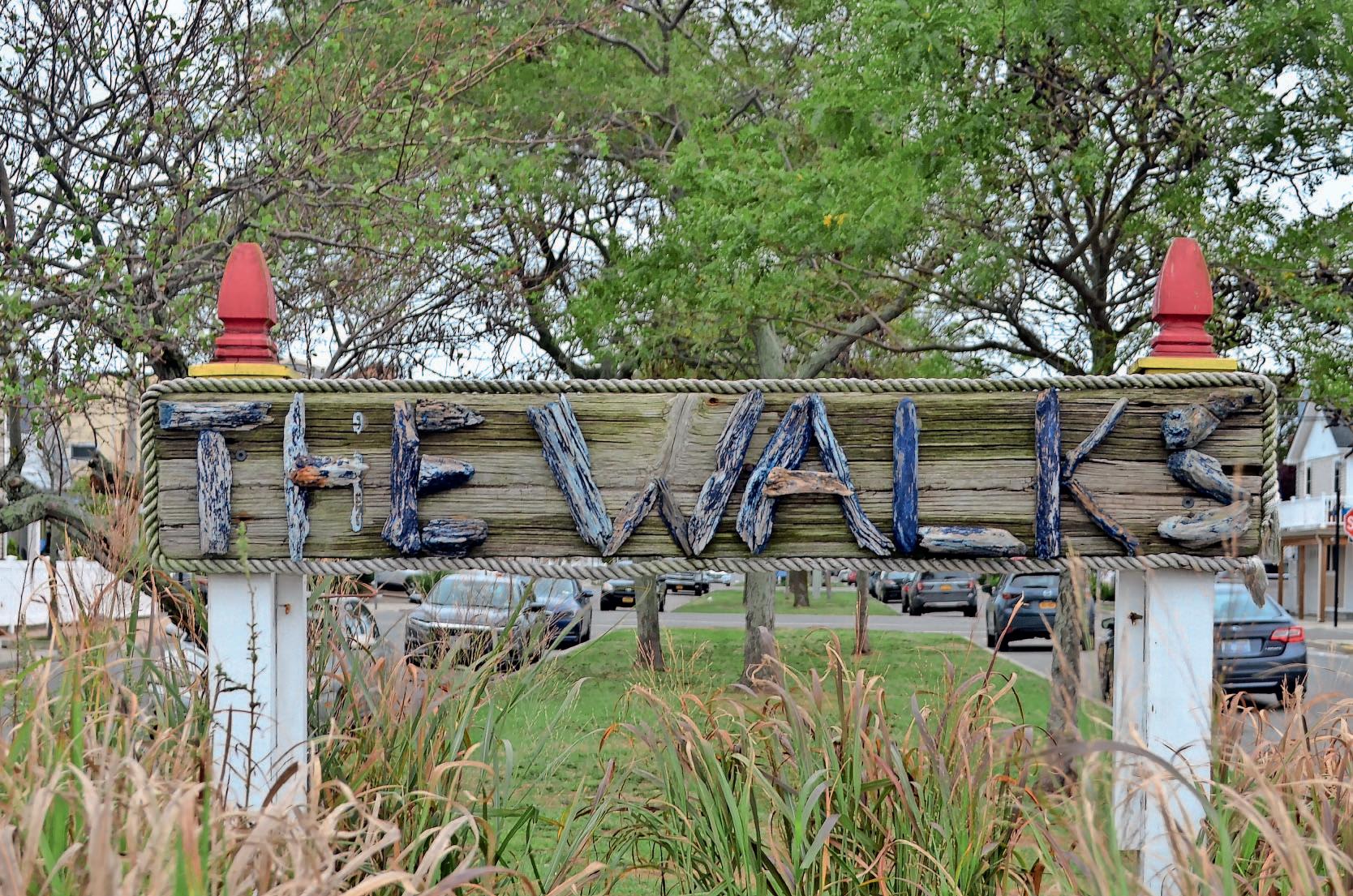
Residents there describe the Walks as the “sweet spot,” close enough to the beach and shops but far enough from the bars.
An English cottage-feel or vacation atmosphere imbues calm on some walks. Trees on a June block form a shady arch over the path. December is known for homes decked out in lights and decorations for the year-end holidays. The tinkling from a water fountain and the background buzz of insects makes one end of May sound like a botanical
these paths, they say, while others don’t use them as shortcuts because they think it’s private property.
The first homes on the Walks were once bungalows that local historians say were built for the military around the end of World War I on land owned by William H. Reynolds, a controversial developer and politician who at one point was a state senator before becoming the first city manager.
“They were all prefabbed and they were all the same,’’ said Eileen Pollis, a Long Beach Public Library librarían with a history focus. “You could put a chimney in for a fireplace. It cost an extra $500.”
The War Department had leased the local seven-story Hotel Nassau as a 500-bed hospital in early 1918, months before the war ended, to take care of the spiraling numbers of wounded coming back, according to U.S. Army archives.
But who named the paths after the months and why is a mystery. Why are March and April missing? Heading east, why do the Walks go from May to December, then continue with January and February?
The naming of other streets in the city have long been a puzzle to locals. Some U.S. presidents and states are honored with street names but not others.
Pollis said residents often wonder about the origins of street names: “It’s really weird. It comes up all the time but there’s no answer.”
In the decades since the first Walks were named, these cottages have become year-round abodes rather than just summer homes. Many homeowners have added second stories to the original cottages.
garden. On several of the Walks, neat bushes line the paths, and flowers spill over white fences.
“Some of them are gorgeous,” May Walk resident Larissa Plastini, 32, says of the paths. “They’re like fairy tales.”
Homeowners say there’s little foot traffic on the Walks. Even longtime Long Beach residents don’t know about
Retiree Mike Serra, 78, remembers when his home and all the others on November Walk had small, grassy front yards.
He says he changed all that: “I was the first to put the deck in. People said ‘What are you doing?’ I said I hate grass.” Now, almost all the homes on his block have decks and fences.
One other notable change has been the three-story-high homes that
This world apart dates back to World War I
Finding peace in the hidden homes ofPhoto by Tim Baker
replaced cottages damaged by Sandy. Neighbors complain these have blocked their views of skies and changed the open vibe along the narrow Walks.
Serra says a number of these big houses are for sale because they are owned by older residents who find them inconvenient. “They made them higher and they’ve got to climb stairs to get in there,” he says. “When you get to my age, I don’t want to look at stairs.”
Ray Costello, 54, says he bought his June Walk home after a casual bike ride down various Walks. “When I rode down this walk, I said ‘wow, this walk is really beautiful.’ ’’





He pointed to the openness of his block, where most of the homes are not fenced in, giving June an airy feel. He can use the neighbor’s front yard fire pit and lawn chairs across the path, all without asking, he says, and vice versa. He and his neighbors celebrate birthdays and other events by setting out tables and food on the Walk, a block party off the beaten path.
Says Costello: “Everybody looks out for each other here.”








